Watching & Photographing Roe Deer |
| This isn’t meant to be article or information about Roe Deer, rather my own experiences watching and photographing them. There’s plenty of detailed information on the internet about Roe Deer which will give more detailed information about them, this is just what I have learnt over the years during which has been mostly within woodland. Although there are six species of deer in the UK, Roe Deer are the only ones found in the Tyneside area and are quite common if shy and nervous of humans. |
| Once you’ve found their signs and know they’re around, the hardest part is to see them, at least for more than just a glimpse – which is what my first experiences were. These were chance encounters when walking in the woods and would result in seeing the white, backend of the deer as it sprinted off. |
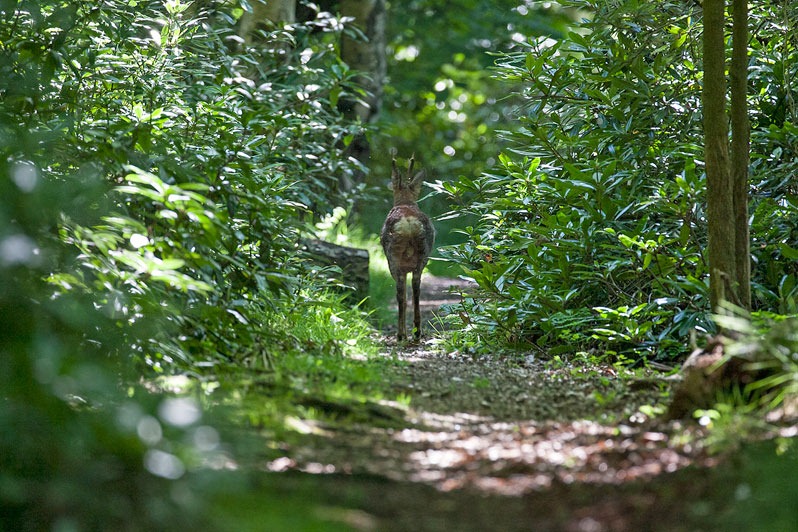 Most typical sight of a Roe Deer as it disappears |
| I’ve found there is three ways you can find animals such as deer in a wooded area. 1) Walk quickly and, presumably if the noise doesn't scare them, you might surprise them but this means you will only get a glimpse. 2) Walk quietly and slowly, looking and listening as you do so and you might come across them and see them before you. The problem I’ve found with this as it comes down to chance. Whenever I’ve seen them, they have been on the move whilst slowly feeding, so it might come down to you’re being at the right place at the right time. 3) Is where I’ve had my closest encounters. Sit and wait! For this you need to know where they are going to be at a particular time. |
 Finding a Roe by the slow quiet, walking method thanks to the heavy summer undergrowth Taken @ 300mm f5, 1/1000, ISO 800 (Summer July 9:54am) |
The Waiting GameThere’s three places I’ve regularly seen Roe Deer in my area – all mostly areas of woodland – but only one I will consistently see them and this is due to one reason – dogs are not allowed! Roe Deer are very nervous animals and can even die of stress. They undoubtedly see both humans and dogs as something that wants to eat them. However, whereas people tend to walk through a wood, along a path often oblivious to their surrounding, dogs, unleashed, will run around and often run after anything that moves. Not very conducive to see this shy animal. If you can find somewhere where you know they regularly frequent and there is no dog walkers, your chances of seeing them in daylight increases. Knowing the area as I do, I know that the deer come in from the surrounding fields at dawn, slowly moving through the woods towards their daytime holdup and as dusk, reverse this behaviour. With the help of finding their tracks and behaviour it’s simply a case of finding a suitable location to view them (for me usually at dawn) and, as in my case, I sit with my back against a tree and sometimes use some netting which I drape over my lens and monopod and simply wait. |
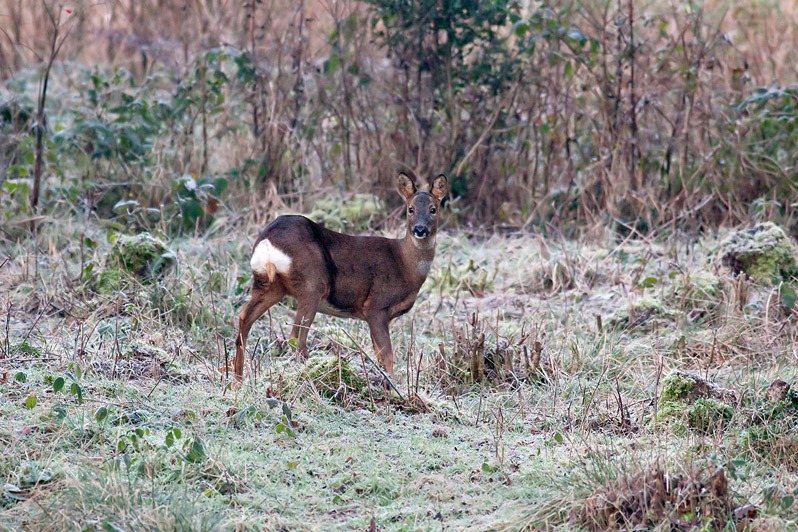 |
| Both these were Roe Deer photographed crossing an open area of regular use by them Taken (above) @ 400mm f5.6, 1/100, ISO 3200 December 8:39am (below) @ 500mm f5, 1/500, ISO 1600 December 9:32am |
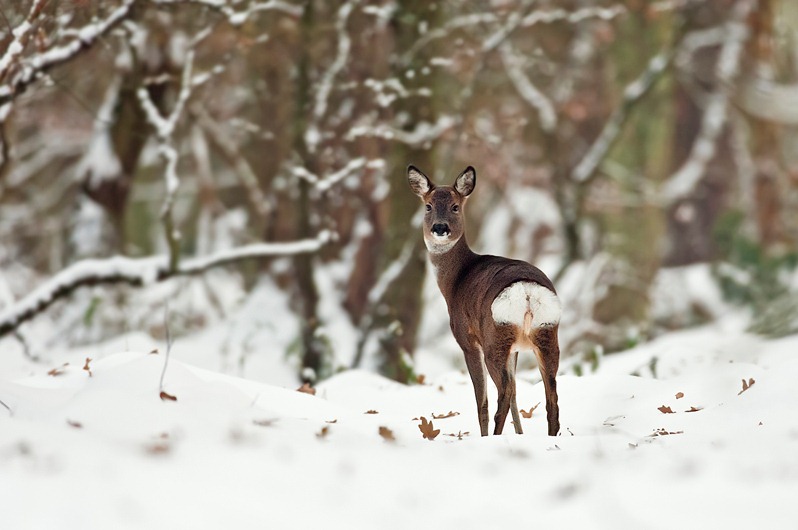 |
The SeasonsFor me each season brings its own pluses and minuses. WinterThis usually means cold and either wet or snowy, but the late dawns means you don’t have to get up at an ungodly hour. Snow on the ground makes it easier to see tracks and for a nice image backdrop. Dressed warmly and with a bin liner to sit on, waiting in the cold, I actually find quite relaxing. Few people tend to be about and wood is at its quietest. Deer are often more active during the day due to it being harder to find food at this time of year and the lack of cover makes them easier to see. SpringThis is the most successful time for me. Sunrises are still at a reasonable time, it’s starting to warm up and there is still a lack of covering vegetation. The deer themselves are grouped together and the seem to be more active particularly the males who seem to be more braver to human presence. SummerWith nice weather and good light this should be the best time of year, but I find it’s the worse for me. Dawn can be as early as five in the morning. With more food about the timid deer is less likely to spend time out in the later daylight hours. In the typical woodland I visit, vegetation, particularly the ferns, are nearly two metres tall making it difficult to see anything even on the regular trails. Worse of all are the mosquitoes! Even walking through the woods means being attacked by hundreds of these blood sucking vampires. If you are lucky however, you might catch sight of a young Roe hidden amongst the undergrowth. AutumnThis should be much like Spring and, in theory at least, be more deer about with the recent additions. The one downside are fallen leaves. Trying to sneak quietly around with a woodland floor of crunching leaves is impossible. Even sitting means keeping movement down to a minimum. It’s amazing how much sound travels in a quiet woodland. |
The PhotographSeeing the deer is relatively easy. Photographing them is more difficult and photographing them so that the image looks and is technically good, is the hardest part for me. Because it’s in the woods there is the problem of light, especially at dawn or dusk. This means a ‘fast’ lens or using a high ISO or more likely both. Oddly, bright, midday sunshine tends to be bad as, shining through the trees causes contrasting bright and dark areas on the scene which can cause exposure problems so a low or muted light works better. Any direct sun would ideally be low and behind helping to mask your appearance and give a good fill on the subject. Tricks & TechniqueAs mentioned earlier there are a number of ways of seeing Roe Deer in a wood but the two I have had success with is the slow walking around approach or sit and wait. The former I would use if there is a bit of undergrowth about as you can get quite close to a deer if your quiet enough without them even knowing you are there - or you knowing they are there but make sure you are downwind of them. I rely more on my hearing than sight in this case as they can be amazingly difficult to see in heavy undergrowth but are very distinctive in the sound they make when moving around. If you do ‘stumble’ across one and it sees you, depending on how close you are, it will do one of two things – stop and stare at you as it weighs you up. Roe Deer eyesight relies a lot on movement, so they might not even be sure of what they are seeing so you need to keep completely still until they feel any danger is over and continue what they were doing. The other thing they will do is run away. If they do, don’t bother trying to chase after it. Firstly it’s not good for the deer but you have little chance of catching up with it. It’s surprising how easily they can disappear into the woods. What I do if they do run is crouch down and watch where they go. Nearly every time I’ve seen them bolt off, they stop a bit further ahead and look back. Despite being very timid they also seem to be curious. If they don’t hear or see anything they might relax and carry on. There’s also a good chance that there might be others following which you weren’t aware of or they of you as they often travel in loose groups. Weather can be important when watching Roe Deer. I prefer windless or near windless days. The obvious advantage is that your scent is less likely to be spread around but it also makes the woodland very quiet so you can hear them before you’re likely to see them. Of course this applies both ways so you have to be careful of the noise you make. Because I’m walking around and need to react quickly, I prefer my Canon 300mm f4 IS lens. It is perfectly suited, light, easy to handle, quite fast and with an image stabilizer and because they are likely to be close you don’t need anything longer. The image below is an example of surprising a Roe, in this case it was a group of three females, the first two ran away but this one was straggling behind and ended up having some boggy ground and me between its escape route. I took a couple of shots before realising this and backed away so it could follow the others. |
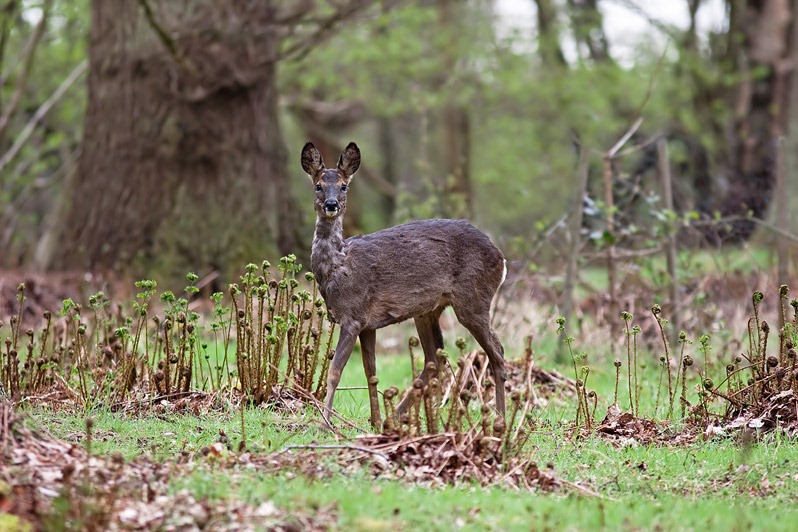 Caught by surprise – notice the stare and state of alertness Taken (above) @ 300mm f4, 1/400, ISO 400 May 10:41am |
| The second option of sitting and waiting for them at a used path or route requires patience but means you can pick your spot, preferably where you have a clear view and the light is favourable. I’ve found that, because my camera is pointing towards open ground, the deer is on the move, maybe moving quite quickly. The trick I use is wait until it’s in the ideal place and take a picture. The sound of the shutter will get its attention and it will stop and look in your direction. This will also help if it is in low light and and your image would otherwise be blurred through movement. I have tried using the ‘silent’ option on my camera but ironically, it is too quite and the deer ignores the sound. Don’t put the camera on a fast shutter rate, this will scare it off. A couple of shots and staying still and quite so letting it naturally continue on its way is the best way to work. For this option I might use the 500mm f4.5 lens on a monopod with some netting slung over although any decent lens will work as long as you can get a decent shutter speed to prevent camera blur or movement. Below is an example of what simply sitting quietly can achieve. This Roe was one of two that, whilst I was sitting against a tree, were walking towards me. As they got closer and closer I was expecting them to spot me any second but didn’t (despite not having my netting). Rather than risk waiting any longer, I took a couple of pictures. The first it was still moving and so was blurred, but the shutter got its attention and it stopped enabling me to get a sharp image even though it was at 1/80th of a second. Surprisingly it didn’t suddenly run of, rather just trotted off in the other direction. |
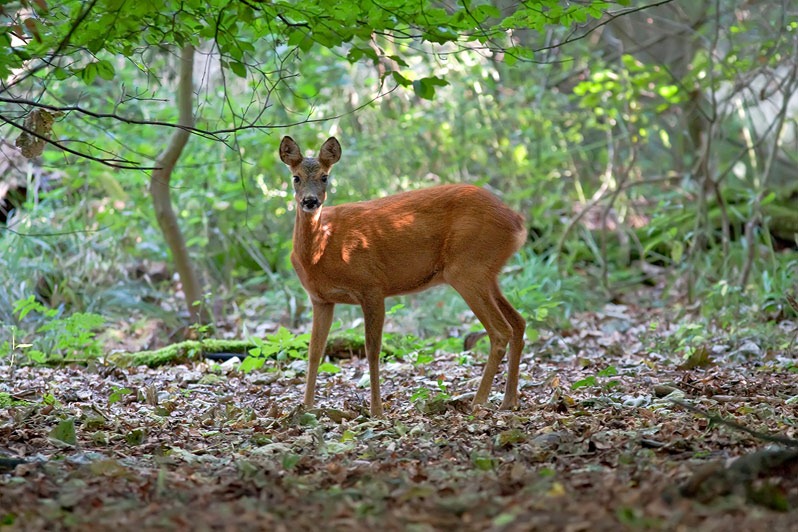 |
| Taken @ 300mm f5.6, 1/80, ISO 1600 September 9:11am |
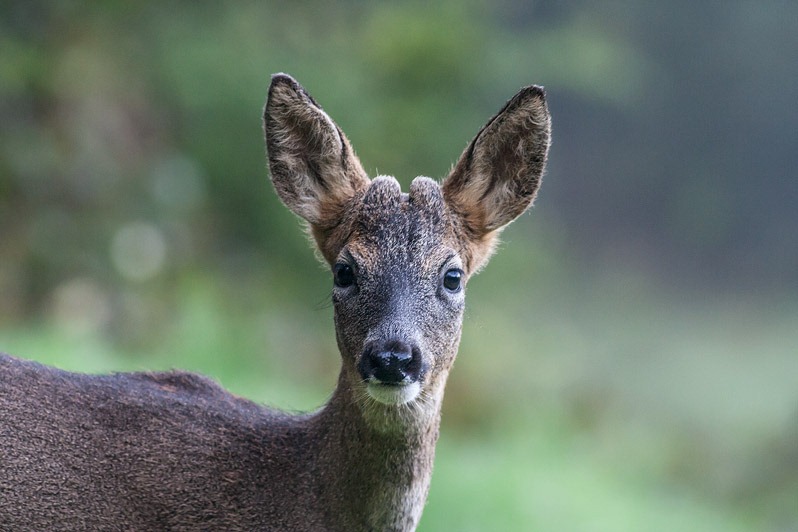 |
| Showing how close you can get! Taken @ 40mm f5.6 1/160 ISO 1600 October 8:24am |
The EquipmentAll my photographs were taken using DSLR’s with lenses of 300mm to 500mm, however, I think I could still get good images on a decent compact or bridge camera. What matters is getting a fast enough shutter speed in the usual low light. I don’t use a hide as I like to be able to move around, but I do use any natural cover or some netting which is small and light enough to fit into my back and yet can hide my camera, lens and the front part of myself. With this I managed on a few occasion to have the deer walk so close to me that it was too near for my lens to focus! |
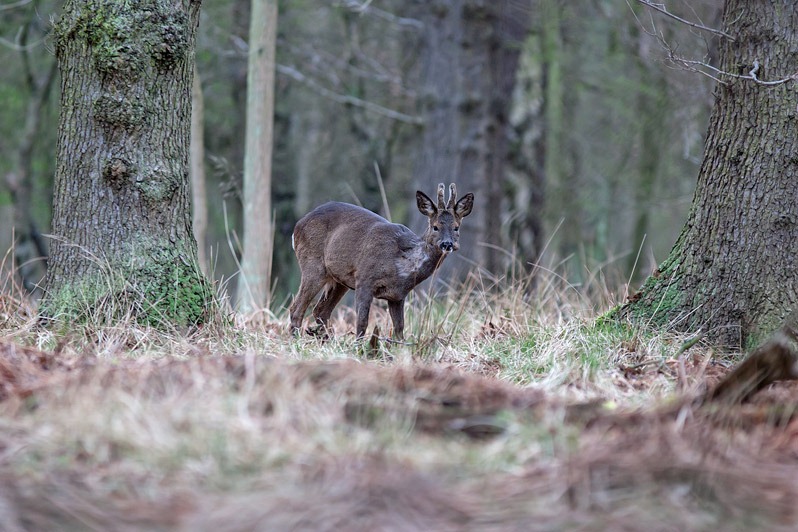 |
| Feeding is always a good example that an animal is relaxed around you Above – Taken @ 300mm f4, 1/250, ISO 800 April 6:37am Below – @ 500mm f4.5, 1/400, ISO 1600 May 7:10am |
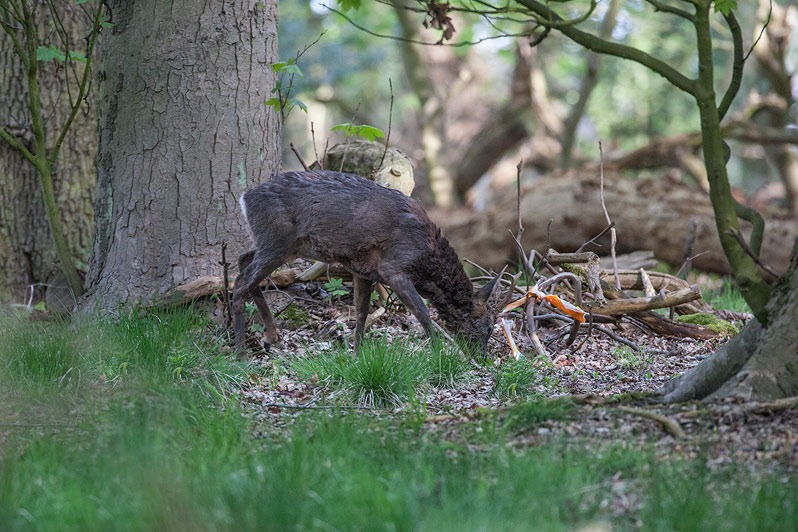 |
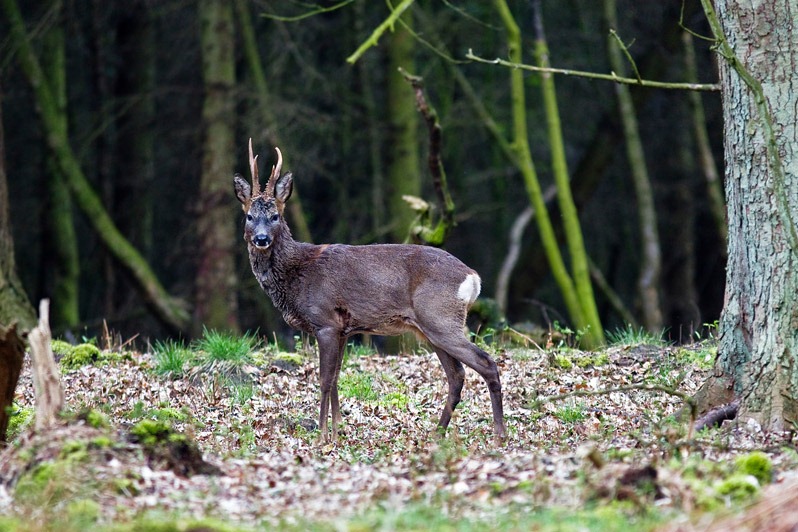 This male had other females around him and wasn’t concerned about me Taken @ 300mm f4, 1/800, ISO 1600 May 8:07am |
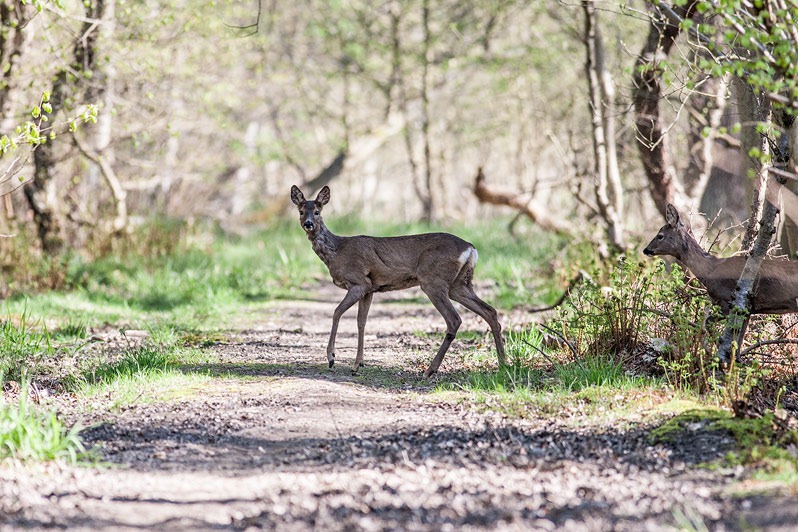 A good place to catch Roe Deer is crossing an open path Taken @ 400mm f5.6, 1/800, ISO 1600 May 9:39am |
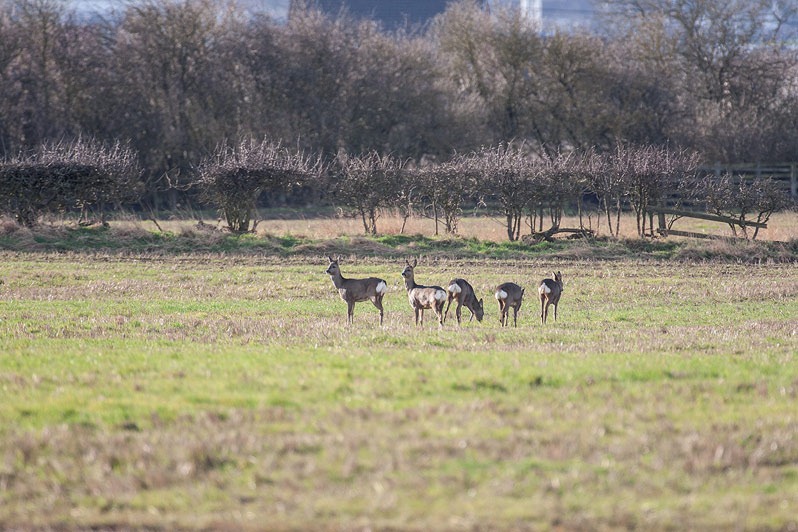 |
| Early morning feeding out in the open before returning to their day cover |
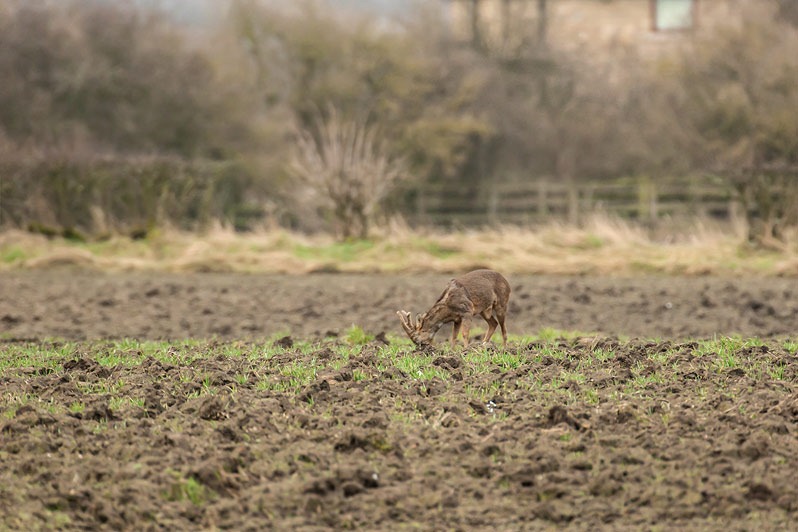 |
Useful AccessoriesApart from the obvious camera, lenses and monopod there are some other items that I will usually take with me when photographing Roe Deer.
Flecktarn Full Body Scrim Net - 180cm x 80cm Binoculars Tamrac Expedition 7x Backpack – Not just for carrying my equipment but if you sit down with it on your back, it acts like a back rest supporting your back Bin liner – For sitting on when the ground is wet, covered in snow or nettles Food & water – For long waits In SummerWitch Hazel Skin Gel – Ideal for mosquito bites (I don’t normally recommend repellent as it smells and is not very effective in my experience Long sleeve shirt – To cover up your arms making you less visible and protection from insect bites Anti Histamines – If you suffer from hay fever or for a lot of mosquito bites In WinterPlenty of warm clothing in layers |
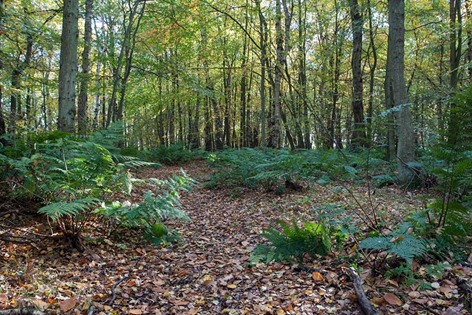
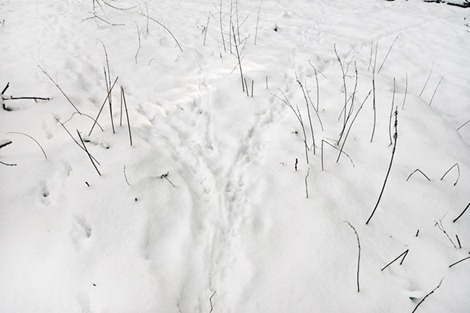
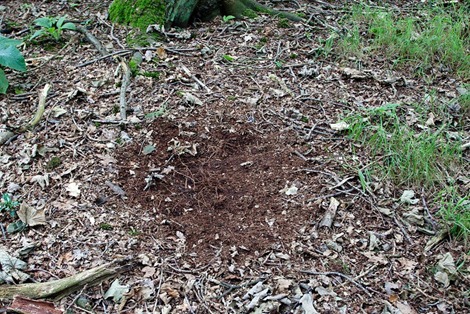
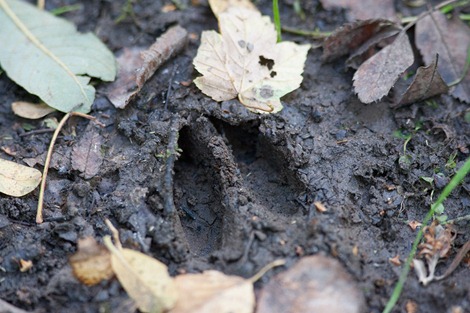






Thank you for the tips, I spend many, many hours trying to see these deer, and many more hours trying to take a photo, I live 30 miles south of newcastle, we have only roe here, unfortunately there has been a lot of poaching going on lately, so the family I had been watching don't seem to be here anymore, but I live in hope that I might be able to take photos like you have on here one day
ReplyDeleteThanks for the comment. I've heard of poachers around here too unfortunately. This just drives, what is a shy and nervous animal anyways, to be more reclusive and particularly nocturnal. 30 miles south of Newcastle puts you around County Durham or Teeside? I'm not familiar with those areas so don't know where the best places are, but you will be surprised just where they can be found (The last two pictures here were taken next to a area of housing and I've seen them often when traveling on the local Metro here). The best way to know where they are, apart from word of mouth, is through tracks especially after a snow fall.
ReplyDeleteHope you continue to look and have better success in the future. They're worth the effort.
Frank
Really enjoyed reading your blog. I've recently had an experience were I had been standing for quite a while photographing a distant pheasant and the edge of a field I thought I would look behind me to see if there were any other pheasants behind me. A Roe deer had walked down the edge of the field and was quite close behind me I don't know who got the biggest fright me or the deer. Got some nice photos as it ran around me a down the field.
ReplyDeleteLike your recommend equipment, would not leave the house without my monopod, great also as a walking stick in rough ground.
I would also add a bush hat apart from the shadow it puts over your face the brim is great for shading eyes when the sun is low. I also have a multi scarf it a sort of elastic tube which you can wear as a balaclava it quite tight fitting so its also good in midge infested areas.
Glad you like the blog. I wonder how many people have got close by to a Roe Deer without realising. It's surprising how close you can get to one (or they to you).
ReplyDeleteYou're right about the hat and I have a bush hat myself. People dress in all the camo gear and forget their face, arms and hands will stand out to wildlife. I use body scrim net to cover myself when waiting and have got within a few metres of a Roe.